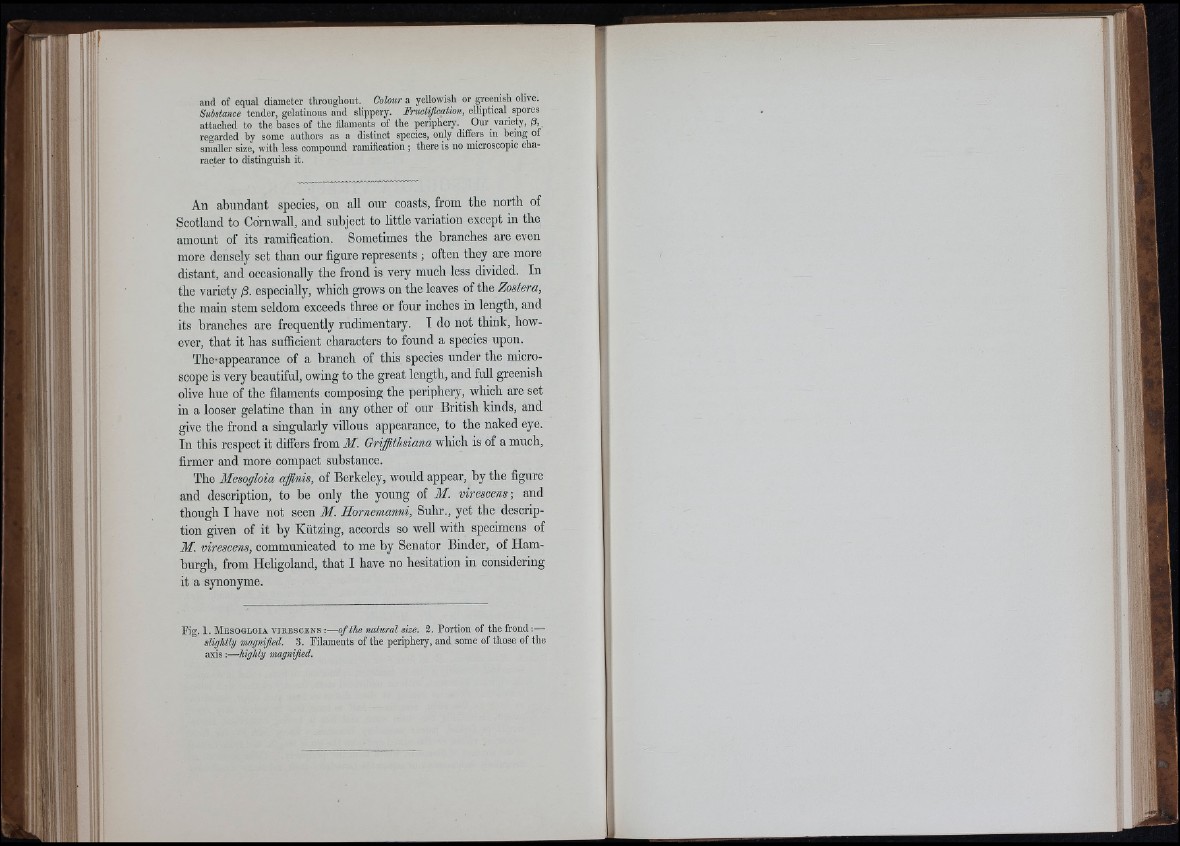
and of equal diameter througliout. Cohur a yellowish or gi-eenish olive.
Substance tender, gelatinous and slippery. Fructification, elliptical spores
attached to the bases of the filaments of the periphery. Our variety, S,_
regarded by some authors as a distinct species, only differs in being of
smaUer size, with less compound ramification ; there is no microscopic character
to distinguish it.
An abundant species, on all onr coasts, from tbe north of
Scotland to Cornwall, and subject to little variation except in the
amount of its ramification. Sometimes the branches are even
more densely set than our figure represents ; often they are more
distant, and occasionally the frond is very much less divided. In
the variety especially, which grows on the leaves of the Zostera,
the main stem seldom exceeds three or four inches in length, and
its branches are frequently rudimentary. I do not think, however,
that it has sufficient characters to found a species upon.
The-appearance of a branch of this species under the microscope
is very beautiful, owing to the great length, and full greenish
olive hue of the filaments composing the periphery, which are set
in a looser gelatine than in any other of our British kinds, and
give the frond a singularly villous appearance, to the naked eye.
In this respect it differs from M. Griffithsiana which is of a much,
firmer and more compact substance.
The Mesogloia affinis, of Berkeley, would appear, by the figure
and description, to be only the young of M. virescens; and
though I have not seen M. Hornemanni, Suhr., yet the description
given of it by Kiitzing, accords so well with specimens of
M. virescens, communicated to me by Senator Binder, of Hamburgh,
from Heligoland, that I bave no hesitation in considering
it a synonyme.
Fig. 1. Mesogloia vieescbns :—of the natural size. 2. Portion of the fro n d :—
slightly magnified. 3. Filaments of the peripheiy, and some of those of the
ax is:—highly magnified.
I
i i-bji
i